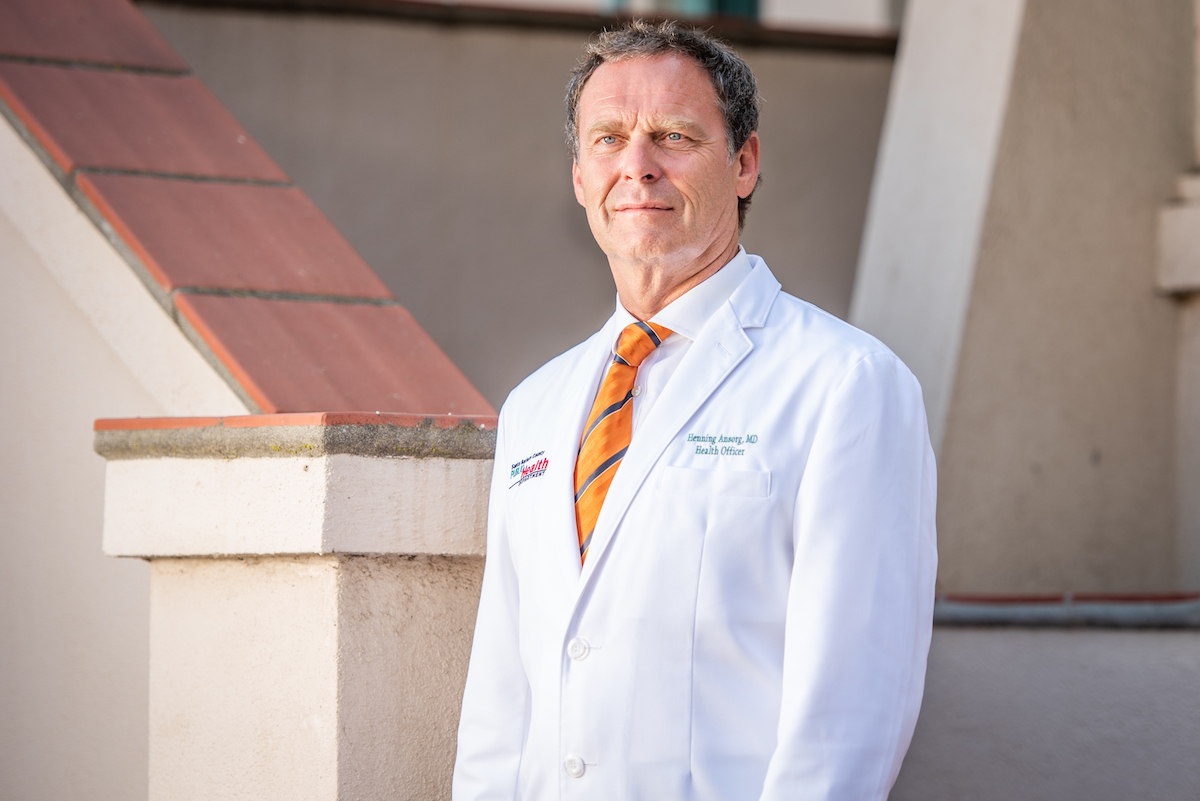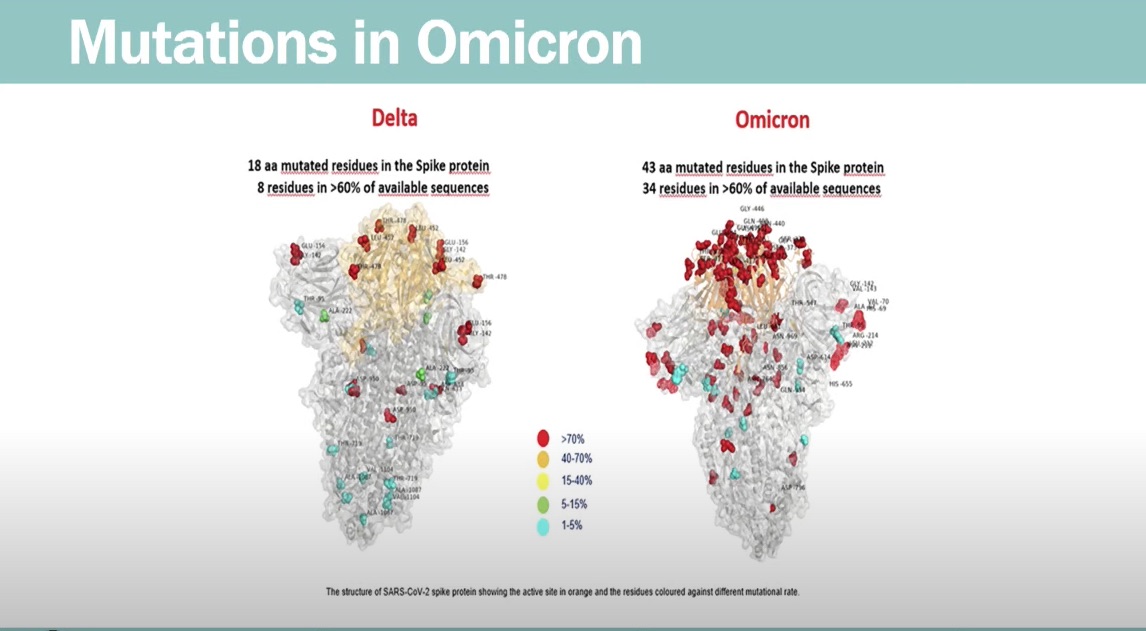Omicron Picking Up Speed
Rate in the U.S. Increasing Rapidly, Expected to Affect Hospitalizations in Santa Barbara County

The Omicron variant is spreading so quickly globally that when the county’s health officer updated the Board of Supervisors on the pandemic in Santa Barbara late Tuesday evening, his statistics from the day before were already out of date. “The U.K. has the most confirmed cases of Omicron worldwide,” Dr. Henning Ansorg said to the supervisors from a video link, adding that the variant represented 40 percent of cases there and noting that his slide, which said 20 percent, was from yesterday. In South Africa, where it was first identified, 90 percent of new cases were now sequenced as Omicron.
“We usually trail the U.K. by six to eight weeks,” said Ansorg, who had expected the Delta variant to prevail locally for the next two months, but that idea may be outdated, too. The Centers for Disease Control announced today that it estimated that 8 percent of new cases were Omicron — 11 percent in New York and New Jersey. “This is concerning,” Ansorg said, “because a week ago, it was 0.4 percent of the general case rate; it was 2.9 percent on Saturday.”
What was different about Omicron was that it only took two to three days to double in number; Delta did the same thing in four to five days. It was also infecting people for a second time. Showing a detailed image of the variant, Ansorg described the mutations on the protein spike that made it spread faster but also somehow protected the virus from the human immune system.

Though it made more people sicker quicker, Omicron seemed, but was not proved, to make them less sick, Ansorg said. The problem was that with the sheer number of people becoming ill, those with weaker immune systems would put a strain on the health-care system. “Getting a vaccination does prevent severe disease and death, but it does not prevent infection or illness,” he said. The speed with which Omicron was infecting people might make it necessary to rethink how they are dealing with vaccinated and unvaccinated individuals, Ansorg said, indicating that slowing the spread through proven measures like masking, social distance, and frequent testing was necessary.
Masking became an issue earlier that day in the supervisors hearing room, when a man was escorted out as he demanded a right to be present unmasked due to a medical condition. The Independent later received an email from the individual, Matthew Strezpek, who had proposed placing the county’s health officials under citizen’s arrest in November and sharing the video worldwide.
Sign up for Indy Today to receive fresh news from Independent.com, in your inbox, every morning.
The pandemic has reached a weary pitch for everyone. The rate in California has risen by nearly 50 percent since Thanksgiving, and hospitalizations for COVID-19 have risen by nearly 15 percent, the state health agency announced on Tuesday. For that reason, as of Wednesday, a new statewide order requires masks in public spaces that are indoors. Santa Barbara has already implemented that requirement since August, with a noticeable drop in cases afterward.
That trend is changing now. Van Do-Reynoso, who leads the county Public Health Department, told the supervisors that hospitalizations in the county had increased by 34 percent in the past two weeks, and that intensive care admissions were up 120 percent. The hospitals continued to have capacity, she noted, but it was a tenuous situation, especially as the state modeling projected increases of 38 percent in hospitalizations through year’s end.
While boosters were highest among those of mixed ethnicity and white people, and 4 percent of children 5-11 years old were fully vaccinated, the unvaccinated people were at considerable risk of COVID-19. Do-Reynoso said almost four times as many unvaccinated people became ill with COVID compared to vaccinated people, and statewide, the rate of death and hospitalization was 13 times greater for unvaccinated people.
At Lompoc Valley Medical Center, they had noticed “breakthrough” cases in vaccinated patients at a rate of 20-30 percent several months ago, hospital CEO Steve Popkin told the Independent last week. “However, in recent months, almost 100 percent of hospitalized patients had been unvaccinated,” he said.
About 68 percent of those eligible for vaccines have gotten the shot, said Do-Reynoso during Tuesday’s report, calling vaccination the best way to reduce the variants’ ability to spread, mutate, and become more dangerous. The vaccination rate continued to be lower among communities of color, she noted; Latinx, Black, American Indian, and Indigenous communities lag behind. Her department continued to partner with trusted community leaders to provide access to vaccines for all.
Given the increased infectiousness of the new Omicron variant, California has also imposed new rules for events of more than 1,000 people. Those attending must either show proof of vaccination or a negative test: within 48 hours if with a PCR test or within 24 hours if an antigen test. And for any travelers entering or re-entering California, they should be tested for COVID three to five days after arriving.
At the Santa Barbara Independent, our staff continues to cover every aspect of the COVID-19 pandemic. Support the important work we do by making a



You must be logged in to post a comment.